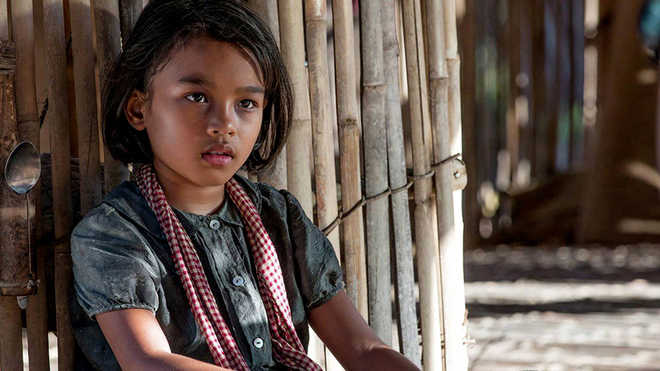Navnee Likhi
“In my heart I know the truth but my mind cannot accept the reality of what this means. I am five years old, and instead of celebrating birthdays, I’m chewing on a piece of charcoal”
— Loung Ung
Based on memoirs of the same name by Cambodia-born American human rights activist Loung Ung, Angelina Jolie’s First They Killed My Father recounts the horrors she experienced as a five-year-old in the Cambodian genocide of 1975. Loung and her family were trapped in a living nightmare and some members of her family disappeared as Khmer Rouge, led by future dictator Pol Pot, rolled into the city of Phnom Penh and forced residents to live in labour camps. Her young mind was shattered by memories of hunger, brutality and death of her parents.
The guerilla army of Khmer Rouge had spent decades on growing and radicalising in country’s mountains and jungles — feeding off the chaos of the Vietnam War. Initially their victory was welcomed with relief by the Cambodians. They believed that this would end years of civil war. But as Khmer Rouge took over the city of Phnom Penh, they imposed their rule of cruelty and power. This new regime led by Pol Pot was determined to eradicate the country’s last and many vestiges of modernity in order to build an agrarian classless society.
With strong narration and vision, Jolie gives an accomplished piece of work. She creates vast overhead shots of forced evacuation in Phnom Penh — as the city residents are made to march towards villages at gunpoint. Roads are crammed with people walking on foot carrying whatever they can salvage. Most of the film centres on Loung and her family’s struggle to survive.
The film begins with US President Richard Nixon’s television news clip about armed American intervention in the Vietnam War. Loung’s story opens with a carefree life she lives with her parents in Phnom Penh in the late 1970s. Her father is a high-ranking official who works under US-backed old regime. When Khmer Rouge arrives in the city in revolutionary triumph, her parents realise that they must hide their identity as hirelings of the government which the Khmer Rouge loathes. Her father pretends to be a manual labourer when the zealots come to kill people or throw them into working camps. Loung’s father tries to lead his wife and children out from the city. However, they are caught by the soldiers and taken away and made to do back-breaking work on agricultural land.
Cinematographer Anthony Dod Mantle peppers these intense shots using drones — with towering overhead look across camps with groups of people below — making them appear like a beaten ant colony.
Every now and then, there are flashbacks of the story of Loung’s family — focusing on her memories of a time when the family was comfortable. Quietly it snaps back into the present and contrasts with Loung’s woeful life in the camp. Khmer Rouge’s constant praising of their Utopian ideals are undermined by what Loung’s sees: the vegetables and food being taken from the camp workers and sent to feed the soldiers: the meagre spoonfuls of broth that the farm slaves stir in their bowls at night gives crude pleasure to the tormentors. Loung’s cold stillness to the trauma, however, gradually switches to defiance as events unfold, showing how children face dislocation, uncertainty, deprivation, besides the fear of gunshots tearing through the treeline at night and mines blasting bodies into the air. Witnessing all this makes her more resilient. Loung’s sister dies and her mother is not allowed more than a few seconds to weep. She tells Loung to run away with her siblings.
The soldiers take away Loung’s father. She overhears her father telling his wife, “Be brave with the children”. He is killed by the soldiers and his body tumbles into a pit. The sadness and confusion is evident in Loung’s eyes. She is devastated by her father’s death and watches helplessly as other families also suffer. Thereafter begins her training as a soldier. In the final scenes of the film, an adult Loung is shown working as a human rights activist.
Sareum Srey Moch gives a stunning performance in the role of young Loung Ung. The film is a hard-hitting tale of awakening in the face of extreme adversity. The movie affirms the triumph of human spirit to fight and survive even against unimaginable atrocities.
Unlock Exclusive Insights with The Tribune Premium
Take your experience further with Premium access.
Thought-provoking Opinions, Expert Analysis, In-depth Insights and other Member Only Benefits
Already a Member? Sign In Now











